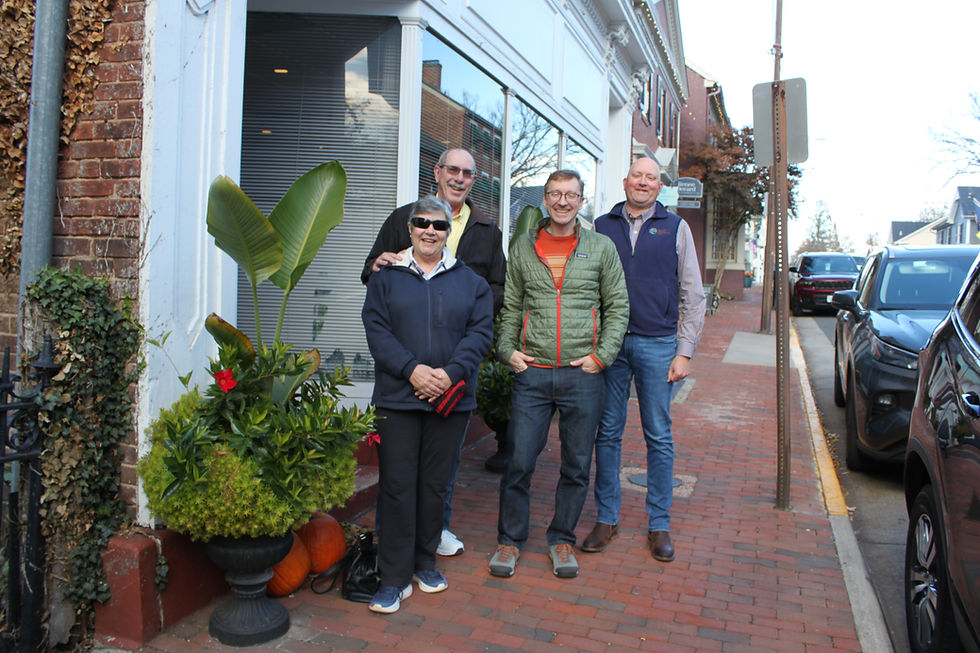Conservationists of Color: Women's History Month Edition
- NVCT
- Mar 17, 2022
- 3 min read
Updated: May 31, 2022

Conservationists of Color Series Contributors (Concept, Research, and Writing): Mary Spindler, Julia Gasink, and Aaron Kershaw
March is Women's History Month and in the spirit of our year-long Conservationists of Color series, this is a perfect opportunity to acknowledge two women of diverse backgrounds' land and water conservation contributions!
This month we acknowledge the contributions of Ynes Mexia and Betty Reid Soskin! Two trailblazing women of color who have made a difference by Saving Nearby Nature. Please read their inspiring stories below!
Ynes Mexia

Ynes Mexia was a renowned Mexican-American botanist who found her calling of botany and land conservation later in life and made a historical impact. Born in Washington, D.C., in 1870, Mexia was a very introverted child, spending much of her time reading, writing, and exploring nature. Once Mexia finished school, she moved to Mexico to help work on her father's ranch. After nearly 30 years working in Mexico, where she endured significant trauma and life challenges, Mexia moved to California to restore her mental and emotional health and begin a new life for herself. Suffering a physical and psychological breakdown, Mexia sought medical care, and nature served as a self-prescribed medication.
Soon, Mexia became very passionate about environmental causes, becoming an early member of the Sierra Club and Save the Redwoods League. During the clear-cutting of redwoods throughout Northern California, Mexia became a vocal conservation advocate and traveled to see the redwood forestry and champion its preservation. "I have been much distressed to hear cutting has been going on in Montgomery Grove, I am heartily in sympathy of any effort to save these trees," said Mexia.
As a newly found conservation champion, Mexia returned to school at 51 years old to attend the University of California at Berkley and study botany in 1921. She soon would work in the field, collecting and categorizing plants during her travels throughout the Americas. In 1925, Mexia collected over 1,500 plant specimens during a trip to Stanford. One specimen called the Mimosa Mexiae became the first of many plants named after her. Her reputation as the first Mexican American botanist grew, garnering the funding that supported her 13-year career in botany. Over that time, Mexia collected over 145,000 specimens. Her reach was grand, becoming known not just as a botanist but as a lecturer, writer, passionate conservationist, and mental health advocate.
Ynes Mexia was a trailblazer of her time, proving that the impact of women in any space has no bounds. To detractors who believe that women such as herself could and should not travel the world alone, Mexia replied, "I don't think there is any place where a woman can't venture."
Betty Reid Soskin

Betty Reid Soskin is a 100-year-old civil rights activist, musician, businesswoman and is currently the oldest active park ranger with the National Parks Service, presently assigned to the Rosie the Riveter World War II Home Front National Historical Park in Richmond, California. Born on September 22, 1921, in Detroit, Michigan, Soskin has blazed trails in many passions over her century of life. As a businesswoman, Soskin founded one of the first Black-owned record stores in the California Bay Area, Reid's Records in Berkeley. She fundraised and marched for Civil Rights causes during the 60s and wrote songs such as "Your Hand In Mine" about the civil rights activist Fannie Lou Hamer. As a park ranger, she also served the Rosie the Riveter World War II Home Front National Historical Park in Richmond, California.
Soskin's service to the National Parks Service was also inspired by her passion for activism. While attending a presentation documenting the development of the National Park where she currently serves, Soskin expressed that as a first-hand witness to wartime racial segregation and discrimination, those stories should not be erased from history but well-documented for proper interpretation of the times. Soskin had joined the Air Force in 1942 and discovered that she'd only been allowed to serve in her role because her fair skin led people to believe she was White. Soskin soon left the Air Force and worked as a file clerk at the Black auxiliary lodge of the International Boilermakers Union in Richmond, CA.
Soskin is a living legend and proof that you always have a purpose so long as you are brave enough to step into it. Seeing it as her duty to share with park rangers her experience as a Black woman during WWII, Soksin officially joined the National Park Service as a ranger in 2004. Soskin is still an active ranger conducting park tours, serving as an interpreter, and explaining the park's purpose and history to park visitors.
"Wish I'd had [the] confidence when the young Betty needed it to navigate through the hazards of everyday life on the planet. But maybe I'm better able to benefit from having it now – when I have the maturity to value it and the audacity to wield it for those things held dear."








What awesome and inspiring portraits of two highly unconventional, creative, and courageous women! As a 51-year-old nature-loving woman of broad interests and a self-employed horticulturist for the last five years, these stories fire my imagination and my spirits.